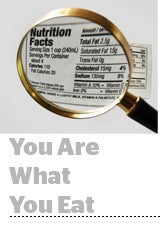 The IAB Tech Lab on Thursday released a new standardization system for third-party audience data and an auditing and credentialing program for data sellers.
The IAB Tech Lab on Thursday released a new standardization system for third-party audience data and an auditing and credentialing program for data sellers.
The effort to bring transparency to third-party data segments has “had a few lives” within the IAB, said Dennis Buchheim, the Tech Lab’s general manager.
The longtime problem is that when an advertiser buys an audience segment for, say, “young mothers,” they don’t really know how those users ended up in the segment.
The new data transparency standard would include information like the date when a user ID was collected, the URL, location data and if the segment includes lookalike modeling.
That’s a departure from today’s practices, where the type and quality of the audience data in a given segment has long been considered “the secret sauce” of each data provider or broker, said Hearst Chief Data Officer Mike Smith.
Quality data can rise to the surface if the advertiser actively tests the market and has a strong attribution program, he said, but the process is expensive and still disadvantages better-quality data suppliers.
One company could hoover up cookies from a network of mommy blogs and repackage all of them in a “young mothers” segment. Another data seller might license household or credit card data to validate whether its audiences are mothers, or even just women. Both data providers might offer segments called “young mothers,” and it’s up to the buyer to discern the difference in quality through trial and review.
But attributing credit for specific publishers or data sources within segments is a maze, Smith said.
For publishers, the issue is twofold.
First, they rely on third-party data segments to meet campaign goals.
Hearst owns Car and Driver magazine, so it has a sizable number of potential auto targets in its first-party data, but if a buyer wants to widen that circle for an auto brand campaign, they might layer in data from a company like LiveRamp, Experian or Oracle Data Cloud. The campaign results still fall on the publisher, though, so media companies need to understand the data being used for targeting on their site.
Second, if a publisher is confident in the value and – let’s face it – the real-world existence of its online audience, it could stand to gain by adding transparency to segments where its readers are mixed with traffic from across the web.
Buchheim said a future version of the standard could also include consent information, which would be critical in Europe for the GDPR or for other potential privacy regulations.
“We’re hopeful publishers will adopt it to describe their first-party data as well,” Buchheim said. “Because in some ways they are the key here as both data sellers and data buyers.”
Meredith doesn’t resell data to exchanges, said Chief Data Officer Alysia Borsa, but the media company supports the IAB Tech Lab program because its buyers still need automated and standardized ways to validated third-party data.
“If you’re a publisher and have strong connections to your audience, this is upfront work that’s going to pay off,” she said.
But adoption won’t be easy, even if publishers put in the work.
Previous efforts by the IAB and other trade groups to illuminate third-party data marketplaces haven’t had much impact because they “needed teeth associated with them,” Buchheim said.
The IAB Tech Lab’s new teeth come from an annual auditing program, the Data Transparency Standard Compliance Program, which will certify whether data providers are correctly labeling their audience data. Some of the largest data sellers, including LiveRamp, Epsilon, Neustar and Oracle Data Cloud, are backing the program, a crucial step to enforcement, Buchheim said.
There’s more support across the ecosystem now, too, Borsa said.
“There’s a broader recognition from exchanges and the buy side that this success or failure in generic third-party data segments falls on them too,” she said, “and not just on publishers and data sellers.”















